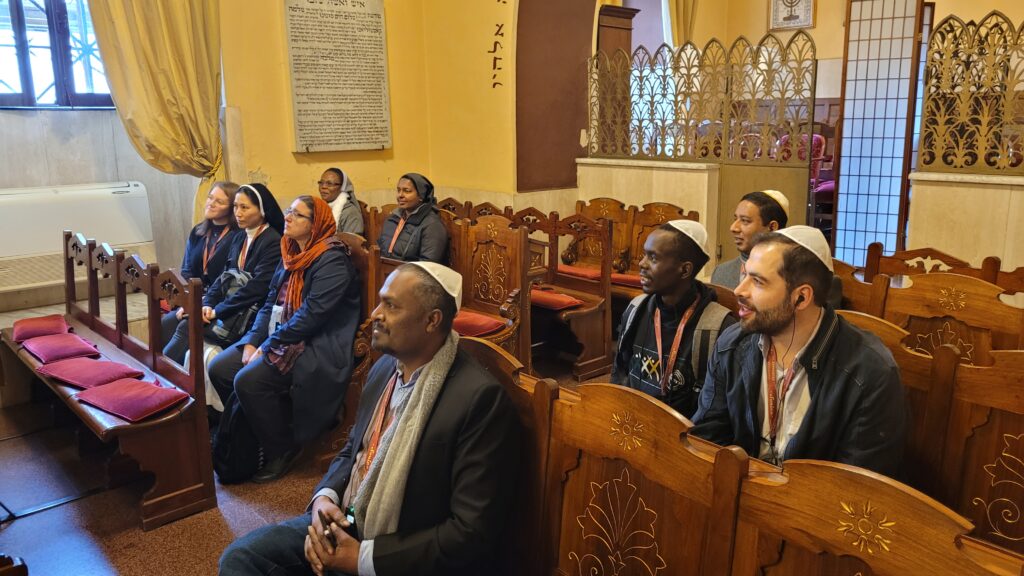On Thursday, November 17, the Russell Berrie Fellows took their annual tour of Rome’s Jewish Quarter. Micaela Pavoncello, a member of the Jewish community in Rome with a degree in Art History, offered an amazing three-hour tour of the Jewish Quarter.
The tour began near Porta Octavia outside the Jewish Museum and discussed the ancient history of the Jewish community in Rome; dating back to the 2nd century, it is one of the oldest Jewish communities outside of Israel. Beginning in 1555, Roman Jews were forced to live in an overcrowded area—the Jewish ghetto—between Teatro Marcello and Isola Tiberina prone to flooding.
The Fellows learned more about the history of the Jewish Quarter at the Jewish Museum, which displays pieces of art, clothing, books, and religious artifacts. The clothing industry has been central for the Roman Jews since the Middle Ages. In fact, many of the liturgical objects were made from fabric taken from clothing. “We discovered that Queen Christina of Sweden, after her conversion to the Catholic faith in 1655, donated to a Jewish merchant two of her royal dresses which subsequently were reconditioned and transformed in liturgical covers,” shares Diana Marinescu, Graduate Administrative Assistant of the JPII Center.
Next, the Fellows visited the Spanish Synagogue and the Great Synagogue, an elegant Art Nouveau-style building inaugurated in 1904. Ms. Pavoncello told the Fellows about the 1986 meeting of Rabbi Elio Toaff and Pope John Paul II: the first time in history that a pope entered a Jewish synagogue.
“As a Catholic, learning about Judaism’s customs and traditions served as a reminder of our common ancestry,” shares Russell Berrie Fellow Fr. Jackson Johnson. “This gave me the chance to reinforce and recognize the need to maintain communication with our ‘elder brethren in faith,’ following in the footsteps of the three Popes who visited the synagogue.”
The tour concluded with a guided walk around the Jewish Quarter. Ms. Pavoncello pointed out places that related to the Holocaust, such as a wooden door still marked by Nazis bayonets. On October 16, 1943, the Nazis rounded up and deported over 1000 Roman Jews to Auschwitz. During the Raid of the Ghetto of Rome, a young boy named Emanuele Di Porto managed to escape, hide for two days by a tramway ticket controller, and find his father. His mother was taken by the Nazis and never returned. “It was difficult and painful to hear the indescribable suffering that Jews had to go through as a diaspora community, particularly during the Second World War,” reflects Fr. Jackson.
The Jewish Quarter in Rome is now one of the trendiest places in the city. “The practice of the Jewish community that still lives in the Jewish Ghetto area we visited surprised me the most as they still uphold their tradition as before and as always,” remarks Russell Berrie Fellow Rev. Karikoga Tawanda Hope. With its narrow streets, delicious kosher restaurants, and archaeological remains dating back to the Roman period, it is a popular destination for locals and tourists alike.

